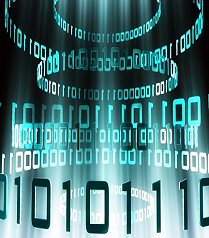Information Technology
Understanding IP Addresses
Posted by cosmic • Filed under InformationTechnology, Internet
What Is An IP Address?

Every machine on a network has a unique identifier. Just as you would address a letter to send in the mail, computers use the unique identifier to send data to specific computers on a network. Most networks today, including all computers on the Internet, use the TCP/IP protocol as the standard for how to communicate on the network. In the TCP/IP protocol, the unique identifier for a computer is called its IP address.
There are two standards for IP addresses: IP Version 4 (IPv4) and IP Version 6 (IPv6). All computers with IP addresses have an IPv4 address, and many are starting to use the new IPv6 address system as well. Here's what these two address types mean:
* IPv4 uses 32 binary bits to create a single unique address on the network. An IPv4 address is expressed by four numbers separated by dots. Each number is the decimal (base-10) representation for an eight-digit binary (base-2) number, also called an octet. For example: 216.27.61.137
* IPv6 uses 128 binary bits to create a single unique address on the network. An IPv6 address is expressed by eight groups of hexadecimal (base-16) numbers separated by colons, as in - 2001:cdba:0000:0000:0000:0000:3257:9652. Groups of numbers that contain all zeros are often omitted to save space, leaving a colon separator to mark the gap (as in - 2001:cdba::3257:9652).
At the dawn of IPv4 addressing, the Internet was not the large commercial sensation it is today, and most networks were private and closed off from other networks around the world. When the Internet exploded, having only 32 bits to identify a unique Internet address caused people to panic that we'd run out of IP addresses. Under IPv4, there are 232 possible combinations, that offer just under 4.3 billion unique addresses. IPv6 raised that to a panic-relieving 2128 possible addresses.
How does your computer get its IP address? An IP address can be either dynamic or static. A static address is one that you configure yourself by editing your computer's network settings. This type of address is rare, and it can create network issues if you use it without a good understanding of TCP/IP. Dynamic addresses are the most common. They're assigned by the Dynamic Host Configuration Protocol (DHCP), a service running on the network. DHCP typically runs on network hardware such as routers or dedicated DHCP servers.
Dynamic IP addresses are issued using a leasing system, meaning that the IP address is only active for a limited time. If the lease expires, the computer will automatically request a new lease. Sometimes, this means the computer will get a new IP address, too, especially if the computer was unplugged from the network between leases. This process is usually transparent to the user unless the computer warns about an IP address conflict on the network (two computers with the same IP address). An address conflict is rare, and today's technology typically fixes the problem automatically.
The original Internet designers never envisioned that the Internet would grow into what it has become today. Many of the problems that the Internet is facing today can be traced back to the early decisions that were made during its formative years.
* During the early days of the Internet, the seemingly unlimited address space allowed IP addresses to be allocated to an organization based on its request rather than its actual need. As a result, addresses were freely assigned to those who asked for them without concerns about the eventual depletion of the IP address space.
* The decision to standardize on a 32-bit address space meant that there were only 232 (4,294,967,296) IPv4 addresses available. A decision to support a slightly larger address space would have exponentially increased the number of addresses thus eliminating the current address shortage problem.
* The classful A, B, and C octet boundaries were easy to understand and implement, but they did not foster the efficient allocation of a finite address space. Problems resulted from the lack of a network class that was designed to support medium-sized organizations. For example, a /24, which supports 254 hosts, is too small while a /16, which supports 65,534 hosts, is too large. In the past, sites with several hundred hosts were assigned a single /16 address instead of two /24 addresses. This resulted in a premature depletion of the /16 network address space. Now the only readily available addresses for medium-sized organizations are /24s, which have the potentially negative impact of increasing the size of the global Internet's routing table.
cosmic
Affiliates
- Australian Cyber Security Centre
Reporting Of Cyber Security Threats - JUSTHOST.COM
Top Class Web Hosting
IT Trivia
The Creation of UNIX
Although many would argue that Windows is the most important operating system ever created, UNIX should hold that title. UNIX started as a project between MIT and AT&T Bell Labs. The biggest initial difference (and most important distinction) was that it was the first operating system to allow more than one user to log in at a time. Thus was born the multi-user environment. * Note: 1970 marks the date the name "UNIX" was applied."
The Advent of Windows 95
Without a doubt, Windows 95 reshaped the way the desktop looked and felt. When Windows 95 hit the market the metaphor for the desktop became standardized with the toolbar, start menu, desktop icons, and notification area. All other operating systems would begin to mimic this new de facto standard desktop."

